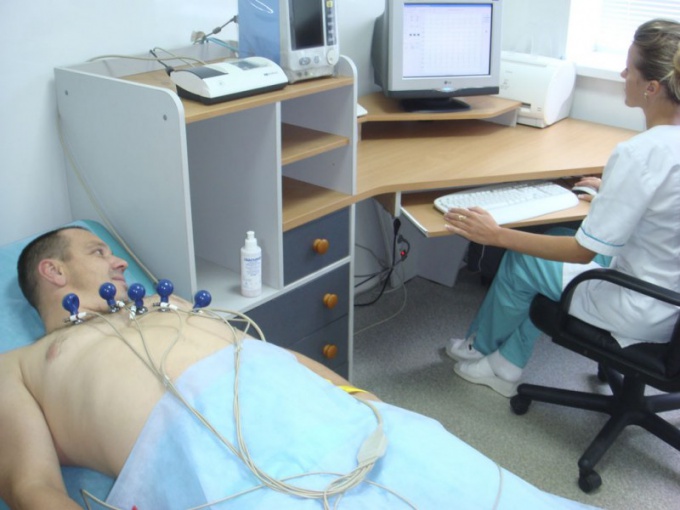Instruction
1
Arrhythmia occurs when the sinus node does not work or works insufficiently. In this case, any part of the heart can assume the role of the driver. You can feel a strong, frequent or irregular heartbeat, fading, interruptions in heart work. Turning to the cardiologist describe all your feelings, also specify how often heart interruptions, under any circumstances. At the initial stage of the disease an arrhythmia can cause stress, physical activity, intake of large quantities of food, alcoholic beverages, Smoking.
2
You may feel shortness of breath, dizziness, heart pain, weakness, can happen fainting or pre-existing conditions. On the basis of the common complaints you will be given a survey.
3
ECG is performed by using an electrocardiograph. This is one of the main methods of examination, which the doctor prescribes in the first place. Electrocardiogram will be recorded and the regularity of the heart rate that allows the doctor to determine the chronic or acute damage to the myocardium.
4
In the screening method, you will have a stress test. The load is performed on a treadmill or stationary bike and shows changes in heart rate during exercise. In the normal rhythm of the allocated five teeth P, Q, R, S, T. the First prong reflects the work of the Atria, the other three systole of the ventricles, ST and T – repolarization. If the disease is absent, the axis will be located down and to the left at an angle of -30 to +90 degrees. In the presence of arrhythmias, thromboemboli, heart block, all indicators will have a significant deviation from the norm.
5
Through daily monitoring according to the method of Halter you will have an EKG within 24 hours. To do this you connect a small logger that will transmit the data research on the computer. This type of research helps to trace the changes in heart rate during the day and to deliver the most accurate diagnosis. All day you will be on minutes to write down everything you do in a diary.
6
If you were prescribed electrophysiological study, the procedure will be performed by means of a flexible catheter with contacts, which is inserted through a vein into the heart. The method helps to determine the induction of arrhythmia. Is carried out only if the previous methods did not allow to make a correct diagnosis.
